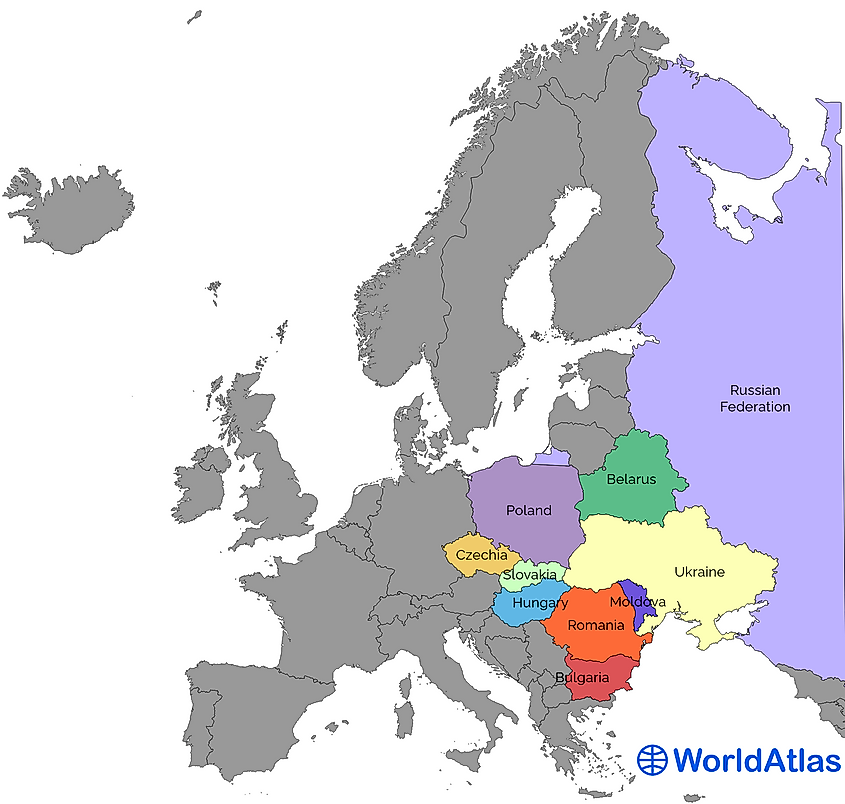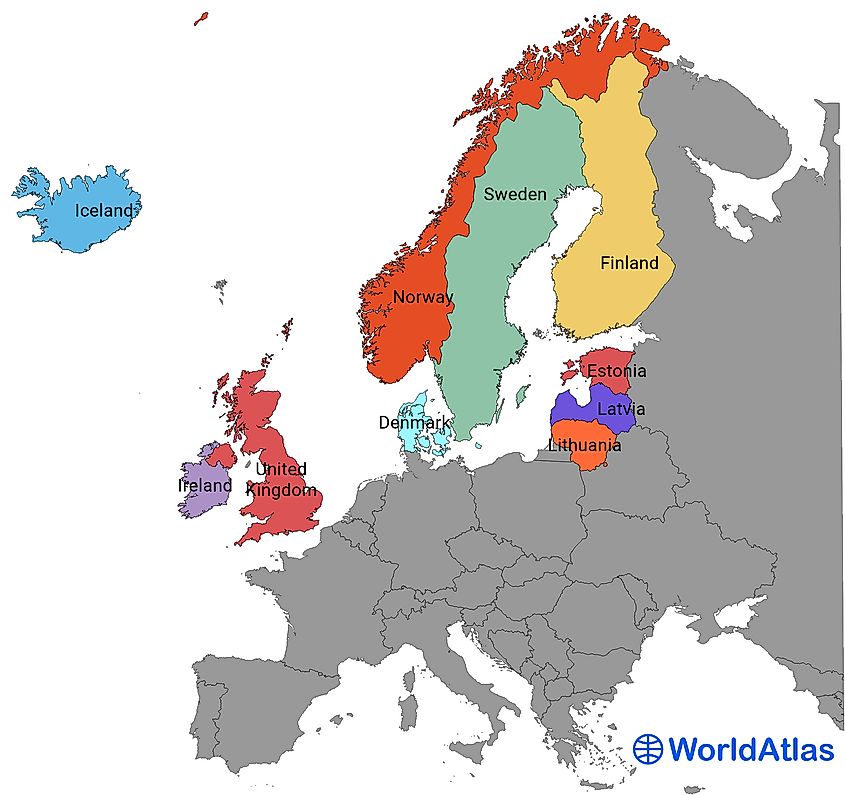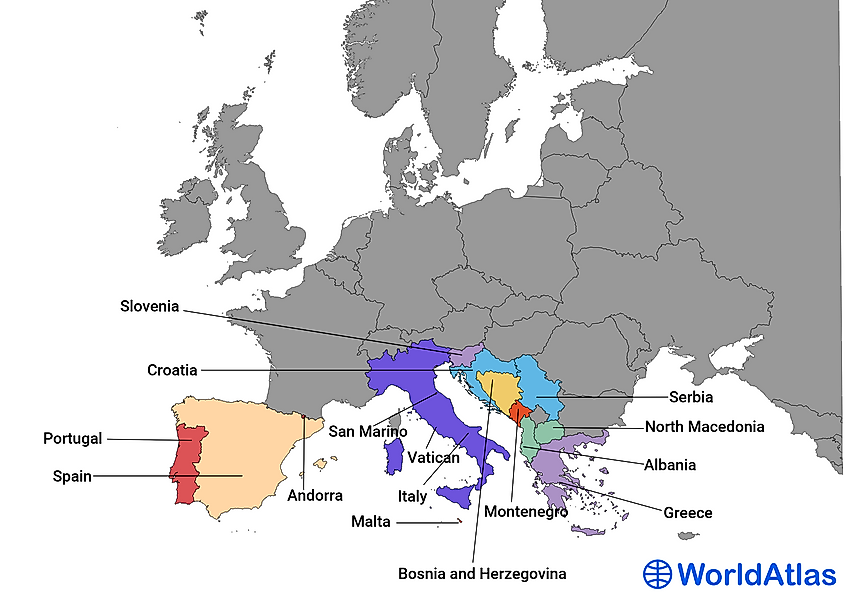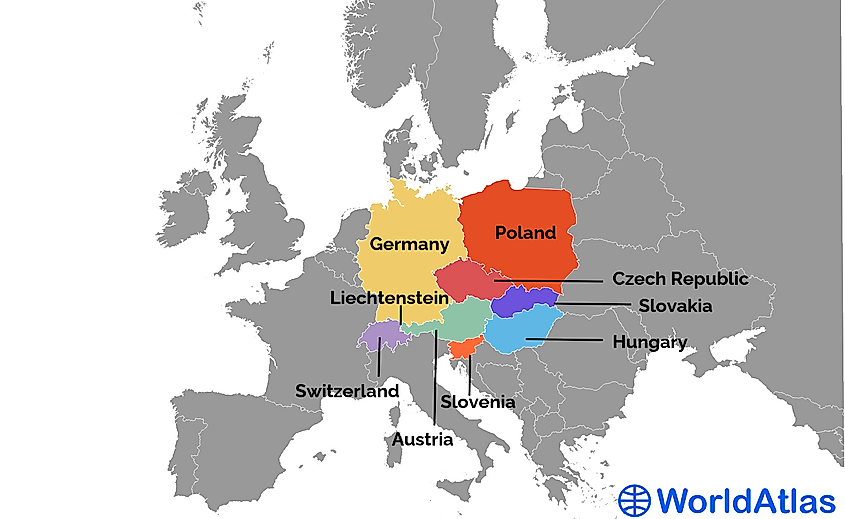
Regions Of Europe
- Europe has a population for more than 747 million people.
- The United Nations Geoscheme divides Europe into 4 subregions: Eastern Europe, Western Europe, Northern Europe, and Southern Europe.
- The U.N. Geoscheme does not necessarily reflect the former or current geopolitical divisions of Europe.
- Eastern Europe is the largest and most populous subregion of Europe.
- Most of Europe's countries are now part of the European Union (EU) and/or NATO.
Europe is a continent of many peoples, languages, and cultures. Today, more than 748 million people live in Europe. For statistical purposes, the United Nations’ Geoscheme divides the continent into four different subregions: Eastern Europe, Western Europe, Southern Europe, and Northern Europe. Each of these four subregions consist of several countries. Some of these countries are small and sparsely populated, while others are large and heavily populated. All of Europe’s countries are generally classified as developed countries, though some are more developed than others. It is also important to note that the divisions created by the UN Geoscheme do not necessarily reflect the historical or current divisions of Europe.
Contents:
Eastern Europe

Eastern Europe is the largest and most populous subregion in Europe, with approximately 284.2 million people, and a total land area of 18,052,768 sq. km. The Eastern European subregion stretches from the Ural Mountains in the east to the western borders of Poland, the Czech Republic, Slovakia, Hungary, Romania, and Bulgaria. It consists of 10 countries. Russia is by far the largest and most populous country in Eastern Europe. Most of Russia’s land mass, however, is part of Asia, not Europe, as Russia is a transcontinental country, and has territory in both Europe and Asia.
Russia and the other 9 countries that make up the subregion of Eastern Europe once comprised what was commonly known as the Eastern bloc during the Cold War. Russia, Belarus, Moldova, and Ukraine were all republics in the Soviet Union, until it collapsed in 1991. Today, most of Eastern Europe is part of the European Union (EU) and NATO.
Though the Cold War has long past, there is still a struggle for influence in Eastern Europe. On one side are NATO and the EU. On the other side is Russia. The EU and NATO seek to further expand into Eastern Europe, while Russia hopes to halt any further NATO or EU expansion, and regain the influence that it had over the countries of the subregion during the Cold War.
Western Europe

Western Europe consists of 9 countries, and has a total population of about 199.6 million. The subregion is home to two of Europe’s biggest political and economic powers, France and Germany. Combined, they contain more than half of Western Europe’s population. Germany is the most populous country in Western Europe, with a population of approximately 83 million, while France has a population of about 63 million. Germany has the world’s fourth largest economy, while France has the seventh largest economy in the world. Formerly bitter enemies, Germany and France are now the driving force of European integration, especially after the withdrawal of the UK from the EU at the beginning of 2021.
Among the other, smaller countries of Western Europe are the so-called Low Countries of the Netherlands, Belgium, and Luxembourg. Further south, on the southern coast of France is the tiny principality of Monaco, which is distinguished by, among other things, being the most densely populated nation-state on Earth. At much higher elevations are the Alpine countries of Switzerland, Austria, and the small principality of Liechtenstein. All the countries of Western Europe, with the exception of Switzerland, Monaco, and Liechtenstein, are members of the EU. France, Germany, and the Low Countries are also members of NATO.
Western Europe has long been regarded as the home of world-renowned cultural icons. Classical musicians, like Mozart, Beethoven, Debussy, and Chopin. Artists like Van Gogh, Renoir, and Chagall, not to mention some of the world’s greatest orchestras, museums, and galleries.
Northern Europe

Northern Europe consists of 10 countries. The subregion has a population of about 109.7 million, which makes it the least populous of the European subregions. More than half of this population resides in one country, the United Kingdom of Great Britain and Northern Ireland. The UK is the mother country of the once mighty British Empire, one of the most powerful empires in human history. At one time, people used to say that the sun never sets on the British Empire, because the British had possessions in every corner of the world. The UK is no longer the juggernaut that it once was, but it is still the most populous country in Northern Europe, with a population of nearly 68 million. It also has the subregion’s largest economy, which is also the fifth largest in the world.
The other countries of Northern Europe include the countries of Scandinavia, Finland, the Baltic States, Ireland, and Iceland. The countries of Scandinavia are well-known for their cradle-to-grave welfare states. Sweden is very famous for its many lakes, and Norway for its many fjords. Iceland is home to the world’s oldest parliament, the Althing. It is also Europe’s least populous country. Only about 343,000 people live in Iceland. The Baltic States, Latvia, Lithuania, and Estonia, are Northern Europe’s newest countries, having regained their independence upon the collapse of the Soviet Union in 1991. All the countries of Northern Europe, except the UK, Iceland, and Norway, are now part of the EU. Most are also members of NATO.
Southern Europe

Southern Europe is where much of Europe’s history began. It is the birthplace of the great ancient civilizations of Greece and Rome. The progress made by these civilizations in governance, science, architecture, and the arts helped shape both Europe and the rest of the world. However, Southern Europe is more than just the ruins of ancient civilizations. Today, it includes 15 countries with a total population of about 152 million people. Italy is the most populous country in Southern Europe, with over 60 million residents. Close behind is Spain, with around 46 million inhabitants. Southern Europe is also home to Vatican City, the world’s smallest and least populous country, with fewer than a thousand residents.
Some of Europe’s most recent armed conflicts have taken place in Southern Europe, most notably in the Balkans. The breakup of Yugoslavia in the 1990s resulted in much bloodshed. Fortunately, however, this bloodshed eventually gave way to happier times. Today, most of the Balkan states are part of the EU and NATO, as are most of the countries of Southern Europe in general. Southern Europe is also home to Europe’s biggest city, Istanbul, though ironically, much of Istanbul and its population technically reside in Asia.
Central Europe

Central Europe is not part of the UN Geoscheme for Europe. Moreover, although the concept of Central Europe exists both historically and currently, there is no consensus as to which countries should be considered part of it. For the sake of argument, it is probably safe to say that there are up to 9 countries that could be considered part of Central Europe. These are Germany, Poland, the Czech Republic, Slovakia, Hungary, Liechtenstein, Slovenia, Austria, and Switzerland. All these countries are part of different subregions of Europe as defined by the UN Geoscheme.
Thus, Central Europe acts as a crossroads of sorts on the continent, where various languages and cultures converge. The region, for instance, includes both Slavic-speaking countries like the Czech Republic, Slovakia, and Poland, as well as German-speaking countries such as Germany, Austria, and Switzerland. Central Europe also consists of countries that were on different sides of the East-West divide during the Cold War. Just like in Western Europe, Germany is the largest and most populous country in Central Europe. In fact, Germany has always played a significant role in the history of Central Europe, starting with the Holy Roman Empire that ruled much of the region during medieval times.











